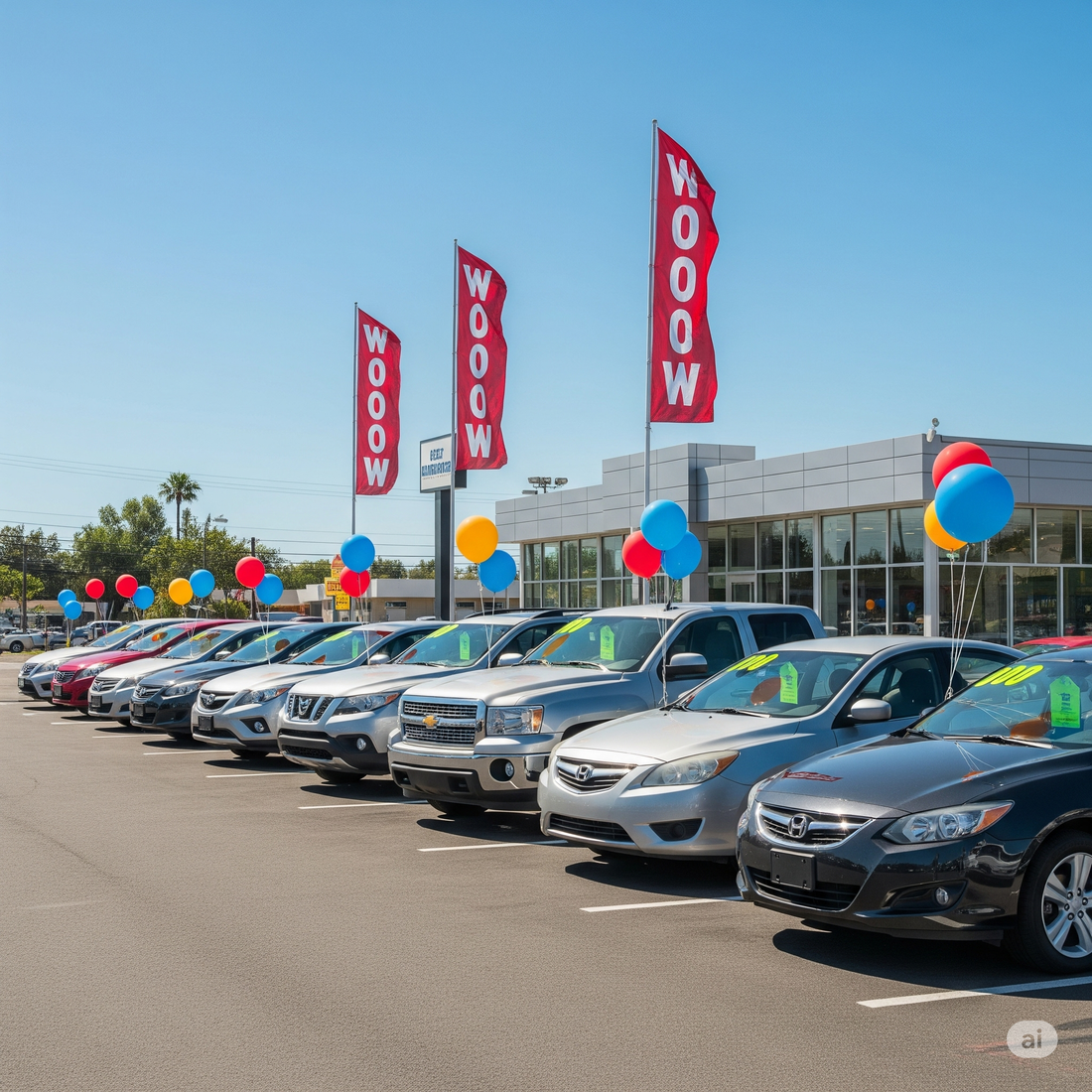
Mastering Your Front Line: Guide to Dealership Curb Appeal and Sales
Angela RoeShare
Mastering Your Front Line: Guide to Dealership Curb Appeal and Sales
Your dealership's front line is more than just a row of cars; it's your silent, 24/7 salesperson. It's your billboard, your first handshake, and the most powerful free advertising you own. For a potential customer, the impression your front line makes can be the deciding factor between driving by and pulling in. An expertly designed front line doesn't just display inventory—it tells a story about your brand, builds trust, and turns passers-by into prospects.
Here is the ultimate guide to designing a front line that stops traffic and drives sales.
1. Strategic Selection: Choosing Your All-Stars
The first rule of a great front line is choosing the right vehicles. This isn't about parking your newest arrivals; it's a calculated decision based on your dealership's size and market.
-
For Smaller Dealers: Your front line should feature your "crown jewels." Select your cleanest, most appealing, and highest-quality inventory. Reserve a couple of your absolute best units for the prime spots directly in front of the showroom doors to create an immediate impression of quality.
-
For Larger Dealers: Your strategy should be specialized. Analyze your sales data and local demographics. If you're in a rural area, your front line should be a showcase of trucks, 4x4s, and SUVs. In an urban environment, focus on high-demand sedans, crossover SUVs, and electric vehicles (EVs). By tailoring your front line to your market, you train repeat traffic to see you as the go-to source for the vehicles they want. When they're ready to buy, your dealership will be the first one they think of.
2. The Art of Arrangement: Positioning for Maximum Impact
How you park your vehicles is just as important as which ones you choose. The goal is to maximize visibility and appeal while conserving valuable space.
-
Angle for a Longer Look: For lots on high-speed roads, angling cars at about 45 degrees is essential. This allows drivers to see the vehicle's profile for a longer duration as they approach and pass, giving them more time to register the make, model, and color. For slower, city streets, parking cars straight-on can conserve space effectively.
-
Every Car Has a "TV Side": Let's be honest, almost every used car has a minor imperfection. The "TV Side" is the vehicle's most photogenic angle. Always position your cars to show off this side. If a bumper has a scuff on the lower right side, park it so that corner is tucked closely and less visibly against the next vehicle.
-
Create Variety, Not a Comparison Trap: Never park two vehicles of the same make, model, or even color next to each other. Placing two Honda Civics side-by-side invites customers to immediately compare them, focusing on flaws ("That one has a scratch, this one has older tires..."). By separating them on the lot, each vehicle can be judged on its own merits, increasing the odds you'll sell both.
3. Silent Salesmen: Signage and Pricing That Sells
Your front line should look like a dealership, not a random parking lot. Professional signage is the key, and it provides vital information at a glance.
-
Windshield Numbers: Pricing vehicles on the windshield is a classic, effective strategy. The choice of windshield numbers matters. Bright, fluorescent chartreuse (neon green) adhesive numbers are an industry favorite because they are highly visible from a distance, even during dawn and dusk. For a more branded look, consider using colors that match your dealership's logo. Our high-quality die-cut vinyl numbers are weather-resistant and leave no residue.
-
Year and Mileage Decals: Providing more information can build instant trust. Use smaller year model stickers and mileage decals to answer the customer's first questions. Pro Tip: If you have a vehicle from the early years of a long-running body style, consider leaving the year sticker off to avoid it looking dated. Conversely, if you have one from the final years of a body style, advertising the year is a huge plus.
4. The Final Flourish: Eye-Catching and Professional Promotions
A little motion and color can dramatically increase the visibility of your front line.
-
Forget Helium, Embrace Reusability: Traditional helium balloons are a liability. They deflate, get sticky, can damage a car's clear coat, and are often restricted by local ordinances. The modern, professional solution is Reusable Balloon Kits. These durable, long-lasting vinyl balloons require no helium and attach to vehicles with clean, simple window clips or poles. They provide the same eye-catching pop of color without the risk or recurring cost.
-
Flags and Banners: Nothing grabs attention like motion. Strategically placed Swooper Flags or Feather Flags with messages like "Sale," "Used Cars," or "We Finance" create a dynamic, professional look that draws the eye from blocks away. For highlighting a specific vehicle's features, Underhood Signs are a great way to make a bold statement.
-
Evening Appeal: Don't let your advertising stop when the sun goes down. A simple trick is to turn on the hazard lights (flashers) on every other car along the front line to create an appealing, attention-grabbing visual pattern for evening traffic.
Your front line is your most valuable marketing asset. By being strategic with your selection, positioning, signage, and promotions, you can create a powerful and compelling first impression that drives foot traffic and boosts your bottom line.
